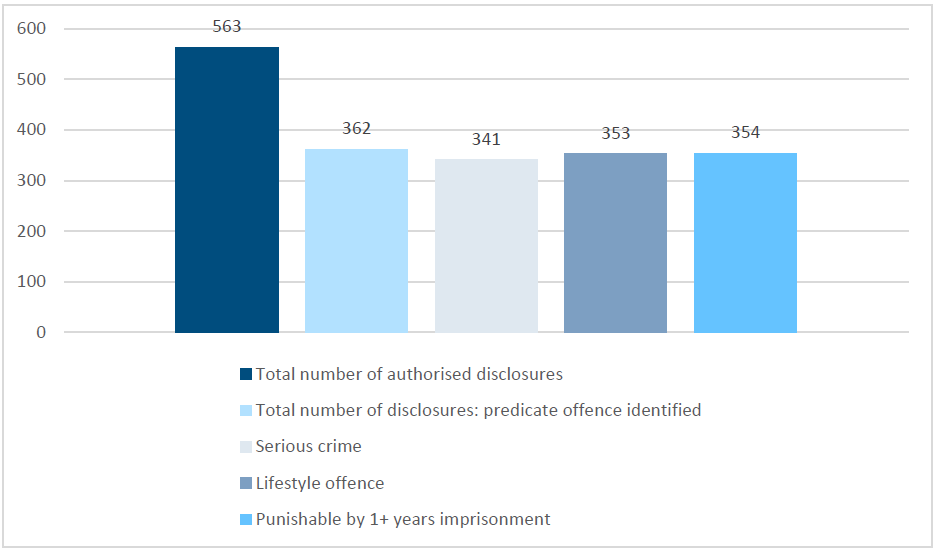Data Analysis
4.30 In our data analysis of SARs discussed in chapter 2, we examined a sample of authorised disclosures in which consent to proceed with a prohibited act is sought.
4.31 We set out to test two hypotheses outlined in our Consultation Paper. First, that one of the causes of the high volume of reports was the inclusion of non-serious crimes. Secondly, that it might be difficult for reporters to identify with any level of accuracy the offence which generated the criminal property in question.
4.32 In order to carry out this exercise, we needed to identify what would constitute a serious crime for the purpose of our analysis.
Serious crimes
4.33 In our Consultation Paper we identified two potential approaches to the classification of offences as either serious or non-serious. We observed that there were at least two existing examples where serious criminal offences have been classified and listed in a statutory schedule. We also outlined the alternative approach of using a penalty threshold, in other words, categorising offences as serious by referring to the length of the maximum sentence available.
4.34 Based on the above, we used three different reference points for deciding if a crime met the threshold of seriousness in our data analysis:
(1) Schedule 1 to the Serious Crime Act 2007;
(2) Schedule 2 to POCA; and
(3) all offences punishable by way of a maximum penalty of more than one year's imprisonment. We set the penalty threshold to meet the requirements of the Fourth Money Laundering Directive («4AMLD»).
Identification of the predicate offence
4.35 We recorded whether reporters had purported to identify the predicate offence in their disclosure. However, we could not judge the reporter's accuracy or level of confidence in their assertion. We found that, in over a third of cases, no predicate offence was included in the SAR as filed. Currently, there is no requirement to identify the crime from which the criminal property originates. Therefore, we cannot be sure of the reason why a reporter did not identify the predicate offence in their disclosure. It could be that further investigative work would be needed, it was impossible to identify the predicate offence or the reporter simply chose not to provide the information as they were not obliged to do so.
Proportion of disclosures for non-serious offences
4.36 Our data analysis also offered the opportunity to assess the proportion of authorised disclosures that related to non-serious crimes. This would allow an assessment of what proportion of the total volume of reports filed with the FIU relate to non-serious offences and an estimate of those resources that might otherwise be able to focus on more serious reports. Our analysis suggests that a shift to a serious crimes approach, on its own, would not significantly impact on the total volume of authorised disclosures filed.
4.37 Our review of a sample of authorised disclosures found that in 94.2% of cases where a predicate offence had been identified, the offence was a «serious offence» listed in Schedule 1 to the Serious Crimes Act 2007. This figure rises if seriousness is defined by reference to the «lifestyle offence» provision in Schedule 2 to POCA (97.5%). Using a broad penalty threshold of offences punishable by way of a maximum penalty of more than one years' imprisonment the figure rises again to 97.8%.
4.38 The penalty threshold approach encompassed a broader range of criminality than the existing schedules. However, across all three tests, well over 90% of authorised disclosures where the reporter identified the predicate offence would amount to a serious crime.
4.39 The chart below demonstrates both trends.

